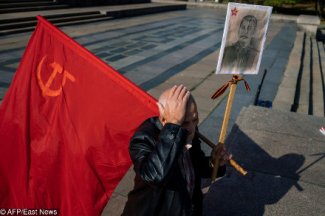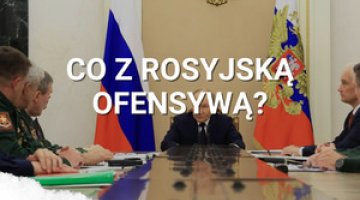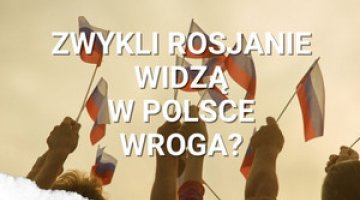The 100th anniversary of the October Revolution: a troublesome anniversary

7 November is the 100th anniversary of the October Revolution in Russia. The official discourse accompanying the anniversary reveals the Russian ruling elite’s ambivalence about the events of 1917. Several individual elements in this discourse should be highlighted. First, despite the linkage of the revolutionary processes of 1917 under the banner of ‘the year of revolution in Russia’, the aspects associated with the Bolshevik coup clearly predominate; the February revolution, as is now traditional, has fallen by the wayside, in a continuation of the Soviet historical narrative. Secondly, the discussions about the revolution are just one element of the authorities’ more widely understood approach to the Communist heritage, which under Putin has been subject to partial reinterpretation. Thirdly, the authorities rate the revolution itself negatively as a historical phenomenon, as follows from the Kremlin’s current domestic political interests.
The authorities’ main dilemma is that it is impossible to reject the legacy of 1917 totally because of its continuing importance for the cultural and historical identity of Russia, while at the same time they are reluctant to accept revolutionary methods as a political tool – in the light of the Kremlin’s current criticism of any forms of rebelling against authority, in the service of the interests of the Putin regime.
Celebrating the centennial of the revolution
The state authorities’ attitude towards the anniversary is ambiguous, not only because of the current political circumstances (of which more later), but also because of the gradual dismantling of the image of the October Revolution as a ‘founding myth’ of modern Russian statehood initiated in the 1990s, a process which began as part of the settling of accounts with the Soviet ideology. Since 1996, 7 November has been celebrated as the Day of Reconciliation and National Unification, and since 2005 it has ceased to be a public holiday. At present, only the Communist party openly defends the achievements of the October Revolution. Most of the political establishment, while recognising the importance of the revolution as an epochal event in world history, evaluates it negatively or condemns it, thus highlighting both the illegal nature of the Bolsheviks’ seizure of power, and the number of victims of the revolutionary terror. However, the October Revolution cannot be separated from the rest of the Soviet heritage, upon which Putin’s state ideology draws. The symbolism of the revolution is still present in the public space, as evidenced by placenames and numerous monuments to Lenin throughout the country, as well as his mausoleum on Red Square in Moscow.
This ambivalence is reflected in the authorities’ attitude towards the commemoration of the anniversary. On the one hand, the government has planned a year-round programme commemorating ‘the hundredth anniversary of the revolution of 1917 in Russia’ (the coordinator of the celebrations is the Russian Historical Society, led by Sergei Naryshkin, the head of the Foreign Intelligence Service). This programme includes dozens of conferences, exhibitions and publications, and the national TV channels have broadcast many reports and documentaries about the revolution. Stories regarding the Bolshevik coup predominate, though increasingly often the term ‘revolution’ itself includes both the February and October events. On the other hand, no celebrations of the anniversary have been held in the Kremlin (the president’s spokesman has even called the merits of celebrating the date into question), and Vladimir Putin has spoken critically several times about both the takeover and the exercise of power by the Bolsheviks, as well as the constitution of the Soviet state as laid down by Lenin’s regime, which in Putin’s opinion sowed the seeds of its future collapse.
Public perceptions of the events of 1917 are also ambiguous; knowledge of their effects is a mix of contradictory content transmitted by Soviet propaganda and the narration of the perestroika period and the 1990s. In March 2017 almost half of those surveyed by the Levada Center concluded that the revolution had played a positive role in Russian history, although at least as many negatively assessed its effects in selected fields such as culture or religious life.
The main dilemmas of interpretation ...
The problem with devising a coherent ideological narrative of the 1917 revolution derives from the Kremlin’s existential domestic political interests. The Putin regime is searching for legitimacy on the basis of a pseudo-conservative ideology which treats socio-political stability as a fundamental value and draws upon a substantial convergence of the interests of the government and the nation. And although in the domestic political sphere the Kremlin is increasingly moving closer to the models of the USSR (the partial rehabilitation of Stalin and the structures of Soviet repression, and a policy of self-isolation with regard to the West), the ideology of which was based on worship of the revolution, Putin’s third term has been marked by unconditional condemnation of the very idea of a revolutionary change of power. This is mainly a result of the fears stoked by the ‘Arab spring’, the protests in Russia in 2011-2012, and finally by the Ukrainian Maidan in 2013-14. The condemnation of revolutions is thus independent of their objectives or the instruments they employ. Official propaganda has been reinforcing the negative image of the revolution by equating the revolutionaries with agents of foreign intelligence services (films devoted to the events of 1917 have repeated the thesis of the Bolsheviks under Lenin being inspired and financed from abroad).
Moreover, the revolution of 1917 does not fit in with the Kremlin’s imperial-superpower discourse, based on the idea of the continuity of the power of the state, as reflected in the symbolic references to both the heritage of the Soviet Union and that of Imperial Tsarist Russia. The period of the revolution and the civil war is seen as a time when the country’s statehood collapsed and the international position of Russia was substantially weakened – in contrast to the Stalinist period which is being heavily promoted today.
... and the attempts to resolve them
Faced with the difficulties of how to include the revolution in the state’s official ideology, the authorities are working to de-politicise the subject of the revolution, and to shape the narrative around the need for ‘national reconciliation’. To this end the government is following three parallel courses: they have been indicating the positive socio-economic effects of the revolution (industrialisation, modernisation, the slogans of social justice); they have also been supporting the cult of Tsar Nicholas II, canonised by the Russian Orthodox Church, and have also been using the victims of the revolutionary terror as a warning against ‘repeating the mistakes of the past’.
The fictional, superficial nature of this ‘reconciliation’ and its exploitation to serve the Kremlin’s interests are clear, both in the lack of the state’s readiness to settle its accounts with the Communist repression during the whole 1917-1991 period, and in its persecution of those groups which are trying to initiate a public discussion on the subject, as well as in suggesting its own logical chain: foreign inspiration – revolution – victims (some representatives of the establishment have directly compared the 1917 revolution to the modern ‘maidans’).
It seems that the themes of the revolution will be further marginalised in Russian historical discourse, as a result of shifting the focus onto glorifying the achievements of the Stalinist era, above all the victory in World War II and the strong state; this will be much more convenient for the Kremlin’s domestic political interests. The effectiveness of this approach is now clearly visible in public opinion polls; it is worth noting the fall in popularity of Lenin, the icon of the revolution, and the rise in acceptance for Stalin, the strong leader, the personification of the idea of the state’s power on the international stage. If the revolution and civil war symbolise the period of chaos, then the Stalinist period symbolises the full stability which is so necessary for the legitimacy of today’s governing elite.




